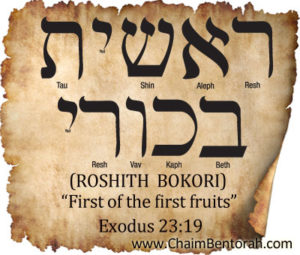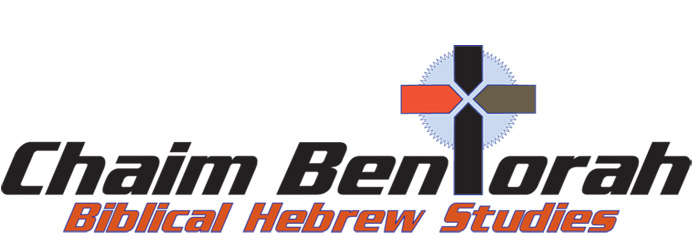HEBREW WORD STUDY – FIRST OF THE FIRST FRUITS – ROSHITH BOKORI
Exodus 23:19: “The first of the first fruits of thy land thou shalt bring into the house of the Lord thy God, Thou shalt not seethe a yearling in his mother’s milk.”
 Fruit in Hebrew is parah which has the idea of offspring, or results, accomplishments. Hence we talk of the fruit or accomplishments of our labor. However, when Scripture speaks of the first fruits, it is using a different word. That word, as used in Exodus 23:19, is bokar. This has the idea of first, to be early. In modern Hebrew, you say bokar tov or good morning. Traditionally the bokar represented agricultural produce. The tradition of first fruits was not only practiced by the Hebrews but the Greeks and the Romans as well. This presented a real problem for first-century Jews as the Roman government demanded their first fruits as did the temple. Hence the question put to Jesus by the Pharisees, should one pay taxes. This was a form of taxation, where the citizens brought the first of their produce to the temple where it was sold and the proceeds used to pay wages, the light bill, etc. So too, Exodus is referring to a tithe to support the temple.
Fruit in Hebrew is parah which has the idea of offspring, or results, accomplishments. Hence we talk of the fruit or accomplishments of our labor. However, when Scripture speaks of the first fruits, it is using a different word. That word, as used in Exodus 23:19, is bokar. This has the idea of first, to be early. In modern Hebrew, you say bokar tov or good morning. Traditionally the bokar represented agricultural produce. The tradition of first fruits was not only practiced by the Hebrews but the Greeks and the Romans as well. This presented a real problem for first-century Jews as the Roman government demanded their first fruits as did the temple. Hence the question put to Jesus by the Pharisees, should one pay taxes. This was a form of taxation, where the citizens brought the first of their produce to the temple where it was sold and the proceeds used to pay wages, the light bill, etc. So too, Exodus is referring to a tithe to support the temple.
But why use the word bokar and not the parah. The passage could have said the rosh of the parah or the first of the fruits, but instead it says the rosh of the bokar, the first of the first fruit. This is followed by the command that the yearling goat was not to be boiled in its mother’s milk. This is very specific.
I wonder if Paul did not have this passage in mind when he wrote I Corinthians 15:22-23: “But as in Adam all die, even so in Christ shall all be made alive. But every man in his own order: Christ the firstfruits; afterward they that are in Christ at his coming.”
The yearling was a gedi, which is a goat. It is suggested that this is the goat that was brought before the High Priest on Yom Kippur. Two goats were brought before the High Priest actually. A lot was thrown and the winner was taken and thrown off a cliff, this was known as the scapegoat. The other goat was sacrificed as a sin offering. It is believed that this is the gedi which was not to be boiled in its mother’s milk.
I would suggest that this is a picture of Jesus who the first of the firstfruits, the best that God had to offer us and like the goat in Exodus, he was sacrificed as a sin offering for us. And what does the idea of not being boiled in its mother’s milk represent? I will talk about that at some future time perhaps.







Ahhhh! How I wish I could keep reading and learn more!!! Like a kid when the story ends and we beg — but I want to know what happens next!!! As a American the trip i took to the Holy Land and Jordan caused my heart and mind to light up like the fourth of July! Thank you for sharing these studies my heart is over joyed each time; I took a biblical Hebrew course last year and this is so helpful. Looking forward to continuing learning to read it well.
Couple of things.
As I read and studied, the scapegoat had the “Sins’ placed on it and was sent out into the desert, it was only after a couple of the scapegoats came back to camp, that there was a, uh, another method used.
What Talmud does Claim use in his studies or does he use them all and cross reference for concurrence?
Thanks